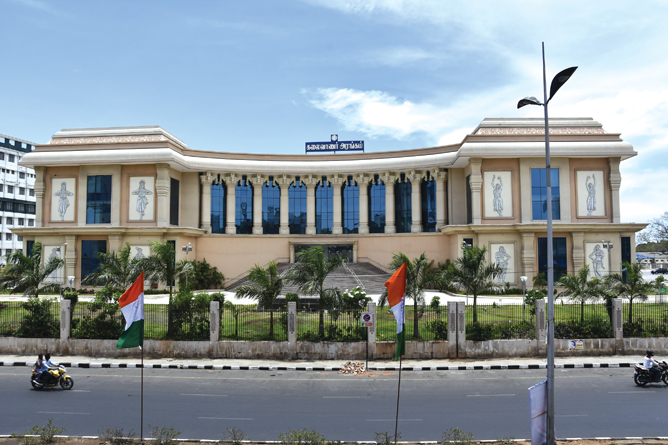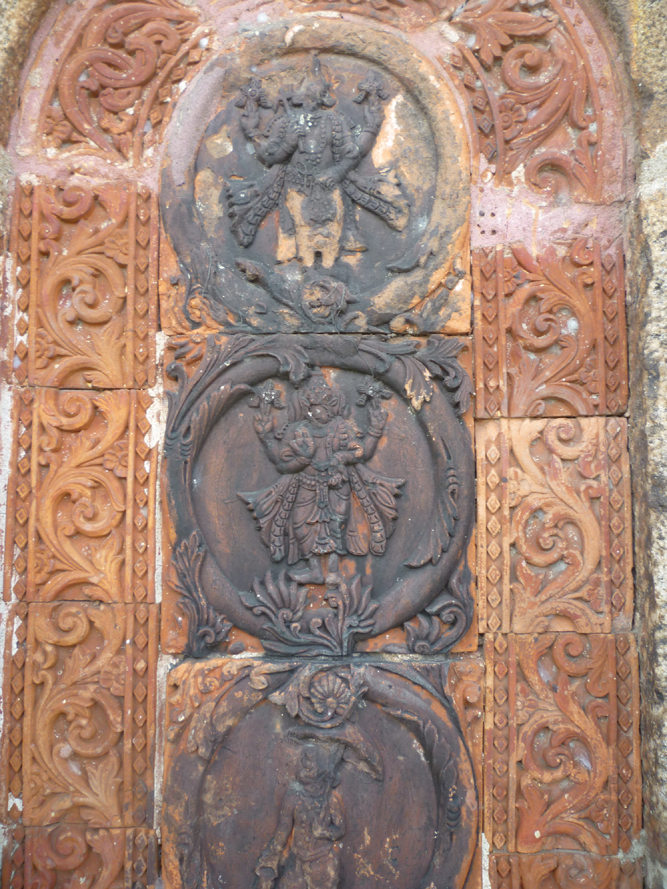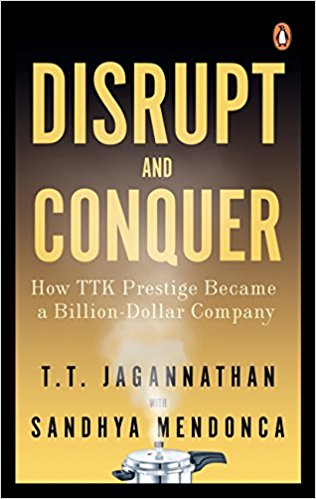Registered with the Registrar of Newspapers for India under R.N.I 53640/91
Vol. XXVIII No. 7, July 16-31, 2018
Archives: Vol. XXVIII No. 7, July 16-31, 2018
No more, says Govt., but still there
by The Editor
What does CMDA know of Govt. buildings or Indo-Saracenic architecture?

Kalaivanar Arangam – lost and found.(Photo: R. Raja Pandiyan.)
Mumbai (formerly Bombay) has achieved what we in Chennai have been trying for long but with no success. On June 30th this year, it was announced that the city’s art deco buildings, along with the famed Bombay Gothic edifices of an earlier century, have both made it to the UNESCO World Heritage List. With this, their future is assured. Now where does that leave Chennai’s Indo-Saracenic? Nowhere, and facing its usual share of threats.
The contrast cannot be more apparent. In Mumbai, the listing was done by a group of heritage enthusiasts banded under an NGO named Art Deco Mumbai. The Government was an active participant and submitted its request for inclusion under UNESCO’s listing as early as in 2012. It remained undeterred despite other Indian monuments and precincts edging the proposal for six years. Finally, the efforts were rewarded with success at the just concluded UNESCO’s World Heritage Committee Meeting in Bahrain.
Compare this with what has happened here. The High Court came up with a listing of 460 buildings. The Government chose to interpret this on the basis of a technicality as a ruling to protect just the facades of the structures. It then decided to employ independent agencies (read inexperienced college students) for a parallel listing exercise that has been ongoing since 2011. The end result was a list of ten buildings (compare this with the Court’s ruling) that slowly expanded to 192, though as to which ones are included, which excluded and if so why, all remain a mystery.
Recently, the Chennai Metropolitan Development Authority (CMDA) suddenly discovered that five of the 192 buildings had vanished. Heading this list of lost structures is Kalaivanar Arangam, whose absence we would assume the CMDA has known for quite sometime now. After all, it was demolished to make way for the hastily planned and even more hastily put up Assembly-cum-Secretariat now masquerading as a Super Speciality Hospital. And there is a new Kalaivanar Arangam, which we must admit is a decent piece of architecture, in place of the old one. Does the CMDA not know of such mammoth structures being put up by the State Government? And in case the CMDA is worried about five buildings, we at Madras Musings can add at least ten more to the list. We can also add some more that are on a highly endangered list.
The problem in Chennai is that the Government, no matter who is in power, views all British-era built heritage as vestiges of a colonial regime. It has not been able to make up its mind on whether these structures need to be preserved. They could consult their counterparts in Mumbai on this. After all, Bombay Gothic and Art Deco too are products of the same era. While on that matter, let us point out that the State Government here does not have any qualms in going with other elements of colonial heritage – the very bureaucracy and methods of administration are hand me downs from then. So too is Fort St. George, which deserves to be on any World Heritage list.
The Government needs to urgently wake up on whatever heritage is still left standing in our city and the rest of the State. For starters, it needs to believe NGOs that are working on such aspects and utilise their expertise. It also needs to present our case of preservation more forcefully in international forums. The last time such an attempt, albeit half-hearted, was made was in 2011. Can we see a revival of that effort and hope for better results?
The hurdles City’s pedestrians face
by A Special Correspondent

“T’ Nagar Residents want their pavements back,” screams the headline in a newspaper that has taken up cudgels for the long-forgotten Pedestrian. A cynic asking, out of frustration, “When did they ever have it?”, is to be excused.
A search for statistics does not yield any meaningful data on the proportion of walkers on Chennai streets compared to vehicle users. It is a safe guess that Chennai must be among the most “walked on” cities in the country or even the world, till someone can disprove it. It is not just the numerical ratio being high, compared to other categories of road users, but the high density of walkers per unit of available road area. In more spacious cities, even if the walker ratio is high, the space available is large reducing the walkers’ hardship and risk. In cities of the developed world, known for their concern for pedestrians, there are protective and right-asserting devices to give the walking public a pleasant experience.

According to one study, an intelligent guess is that 30 per cent of total trips on roads are by foot indicating, happily, a preference for walking as a means of mobility. This needs to be recognised and even encouraged by making conducive provisions for walkers, modifying the vehicle-centric design of roads. Pedestrians cannot be told that they are using roads at their own risk. They must be facilitated to walk safely before they are told to be cautious of the risks on the road.
In Chennai, there are pavements but mostly as an apology for a facility.
Lost Landmarks of Chennai
The entrances to Chepauk Palace

The porcelain ornamentation.
Strange though it may seem, Chepauk Palace does not face the sea. Its front face originally was towards the city, but subsequent alterations by Chisholm, especially the erection of the Public Works Department Buildings, and Records Office give us an illusion that the palace had its gates facing the sea. That this was not so is also buttressed by the fact that the Nawab’s bathing pavilion, usually one of the most private of spaces in any Islamic palace design, was close to the sea, a space now occupied by the University of Madras. It is hardly likely that the palace would have had its entrance close to the bathing pavilion.
Chepauk today has no impressive entrance arch. To access the palace you need to drive north on Kamaraj Salai, turn to your left at Ezhilagam, and then turn left once again just before you reach the Buckingham Canal. You then walk through a pair of gateposts that clearly belong to the late 19th Century and are face to face with the two blocks – Humayun and Khalsa Mahals with Chisholm’s Tower dividing them. This is hardly an impressive entrance for a palace that was the residence of a ruling potentate when it was built in 1768.
A corporate story that grips
by Sushila Ravindranath

I discovered the TTK Group and T.T. Jagannathan more than three decades ago. This sounds strange from someone who was born and brought up in Madras and who had met many family members. Till I started working for Business India, the country’s first business magazine, and moved to Madras after living away for several years, I never thought of TTK’s as a pioneering business family. I did a cover story on them and we gave it the title, ‘The Dark Horse from the South’. I was to learn many things about the Group, like they offered an astonishing variety of products, tooth brushes, shoe polish, mixers, undergarments, gripe water, condoms and, of course, pressure cookers. They not only sold them but also manufactured them.
Pavithra’s Perspective
Pavithra Srinivasan

Pavithra Srinivasan is a writer, journalist, artist, translator, columnist and editor – not necessarily in that order. She is fascinated with History, and writes children’s fiction for adults in The Hindu. She’s also an organic farmer and lives on her farm in Thiruvannamalai District, Tamil Nadu, where taps are still seen as luxury items. She has to her credit two collections of historical short-stories for young adults, Yestertales (Vishwakarma Publications, 2017); Little-Known Tales from Well-Known Times: Back to the BCs, (Helios Books, 2012); two historical novellas Swords and Shadows and I, Harshavardhana (Pustaka Digital Media, 2016), and 10 translations, including Kalki’s epic historicals, Sivakamiyin Sabadham (Helios Books, 2012, Tranquebar Press, 2015) and Ponniyin Selvan, (Tranquebar Press, 2014);

